Walking with a wearable robotic exoskeleton may enable people with multiple sclerosis to walk more efficiently by reducing the energy and muscle activity needed to walk, according to research presented this week at the Association for Academic Physiatrists Annual Meeting in Sacramento, Calif.
Multiple sclerosis (MS) is a disease in which the body’s immune system attacks its central nervous system – the brain and spinal cord. The disease is chronic and potentially disabling and has a variety of symptoms, including numbness and weakness in the legs, tremors, lack of coordination or unsteady walking and even paralysis. It is estimated that 2.3 million people worldwide suffer from MS.
Once the trappings of science fiction, wearable exoskeletons have now entered healthcare as a rehabilitation tool to increase physical function and quality of life. These suits are designed to facilitate walking in people with neurological conditions, but few studies have been conducted to evaluate the amount of assistance they can provide when walking. Researchers from The University of Texas Health Science Center at Houston (UTHealth), TIRR Memorial Hermann and Texas Women’s University recently studied the feasibility and effectiveness of using an exoskeleton to help people with MS walk.
The researchers studied a 33-year-old female with relapsing-remitting MS who had a score of 6.0 on Expanded Disability Status Scale. This scale quantifies disability in MS based on a scale of zero (no disability) to 10 (death due to MS). The participant received 12 training sessions in exoskeleton-assisted walking and was then asked to perform a series of tests at the end of her training: a timed up-and-go (or TUG) test, which measured the amount of time it took her to go from a sitting to standing position, walk three meters, turn around, return to her chair and sit back down; a 25-foot walking test at both a self-selected and fast pace; and a six-minute walk. For all tests, the researchers assessed the amount of energy expended as well as the muscle activity in both the upper and lower body. The results of these tests were compared to the results of the same tests completed at the end of the study without the exoskeleton.
“Our study participant told me when she was in the study, ‘I am looking at the quality of the rest of my life, not quantity of the days I can live,’ explains Shuo-Hsiu “James” Chang; assistant professor at UTHealth; Neurorecovery Research Center at TIRR Memorial Hermann; and lead investigator in the study. “It is a strong message telling us that rehabilitation plays a critical role in helping people with MS to live better quality lives. I believe exoskeleton-assisted training and walking is one of the most effective strategies that can promote quality of life and community reintegration in this population.”
During the six-minute walking test, the participant maintained an approximately six percent lower heart rate and required 7.5 percent less oxygen to complete the test in the exoskeleton when compared to walking without it. However, during the 25-foot walking test at a fast speed, the participant’s heart rate was 10 percent higher and oxygen consumption was three percent higher when wearing the exoskeleton. Finally, the researchers noticed all muscles in the lower body — with the exception of the semitendinosus, one of three hamstring muscles — showed less activity during the 25-foot walking test at a self-selected speed and the six-minute walking test when assisted by the exoskeleton. And, similar to energy expended, muscle activity increased during the 25-foot walking test at a fast pace in the exoskeleton. When attempting the TUG test, the participant found it difficult to operate the exoskeleton.
“To promote walking for people with MS, we need to be creative and develop novel strategies. Wearable exoskeletons offer the feasibility of assisted overground walking and may be effective assistance devices to promote efficient walking, and better quality of life,” says Dr. Chang, who notes the wearable exoskeleton is one of the advanced technologies that could further promote effectiveness of rehabilitation strategies.
“We need to conduct more studies – such as larger trials with larger populations (looking at MS, stroke and other diseases and conditions) and effectiveness studies – to perform a systematic investigation and analysis that studies effectiveness of exoskeleton-assisted rehabilitation in MS,” says Dr. Chang. “In our research center, we have another ongoing exoskeleton study that is designed to develop an algorithmic-based evaluation and treatment approach for wearable exoskeleton-assisted rehabilitation that focuses on physiological changes and gait in patients with stroke, spinal cord injuries and MS. We expect the results will help us to understand better how we can utilize exoskeletons and design effective exoskeleton-assisted rehabilitation programs.”
Editor’s Note: This project is part of a study funded by the National Multiple Sclerosis Society












